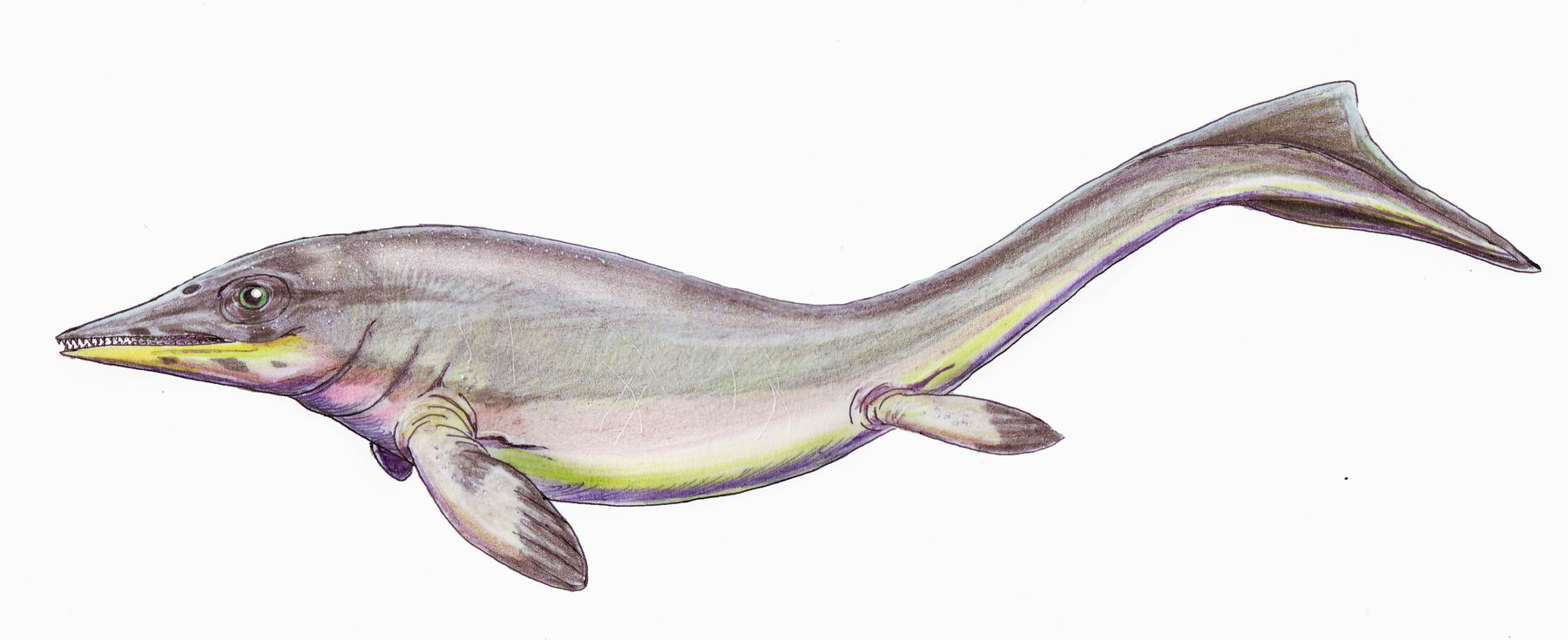 |
| An artist's impression of Grippia |
During the early Triassic there lived a species of primitive aquatic reptile known as Grippia which is thought to be an early ichthyosaurid. Yet recently a fossil has been recovered which may well bridge the gap between the ichthyosaur family and its terrestrial ancestors.
Discovered in China's Anhui Province in 248 million year old rocks, which pre-date strata containing Grippia fossils by 18 million years, the species has yet to receive a scientific name but its morphology indicates that it was an ichthyosaur; one which lived an amphibious lifestyle, capable of existing on land and in water in equal measure.
Discovered in China's Anhui Province in 248 million year old rocks, which pre-date strata containing Grippia fossils by 18 million years, the species has yet to receive a scientific name but its morphology indicates that it was an ichthyosaur; one which lived an amphibious lifestyle, capable of existing on land and in water in equal measure.
The bones were thicker and more dense than in other ichthyosaur species, showing that they were designed to deal with greater stresses than aquatic species whose body weight is supported by water. This fits with the idea that ichthyosaurs first evolved in choppy coastal waters, where strong bones would have aided propulsion, before developing a more streamlined physique to deal with the deep oceans. Other clues which hinted at an aquatic lifestyle were a short nose like that of a land-dwelling reptile rather than the long, pointed tweezer-like jaws of more specialised species which lived during the Jurassic, and large flexible wrists and flippers, allowing for terrestrial locomotion as well as propulsion in water.
 |
| The as-of-yet unnamed species of basal ichthyosaurid |
Living just after the Permo-Triassic extinction event, it may shed light on how life recovers from an extinction on a greenhouse planet. 'This was analogous to what might happen if the world gets warmer and warmer,' Motani said. 'How long did it take before the globe was good enough for predators like this to reappear? In that world, many things became extinct, but it started something new. These reptiles came out during this recovery.'